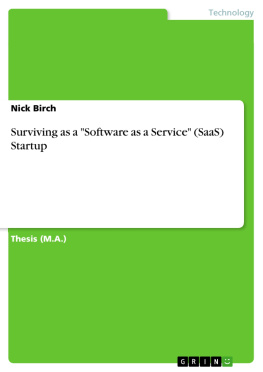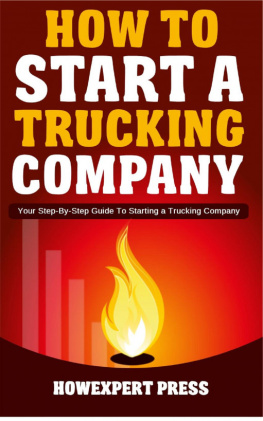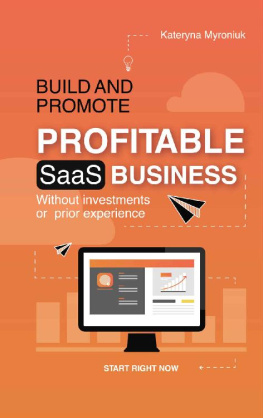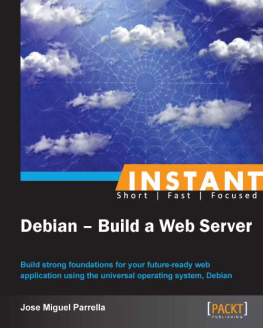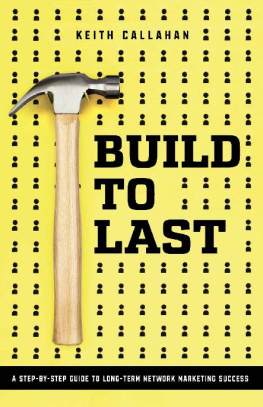How to Build a SaaS Business
A Step-By-Step Guide to Starting and Operating a Software Company
By Einar Uvslokk
Copyright 2021 All rights reserved
Table of Contents
Title Page
Copyright Page
How to Build a SaaS Business: A Step-by-Step Guide to Starting and Operating a Software Company
Introduction
Chapter | Revenue And Monetization
Chapter | Align Yourself with Others in Your Space
Chapter | Process, Process, And Process
Chapter | Work on Road Mapping
Chapter | Work on Building a New Marketing Strategy
Chapter | Build a few Customer Advocates
Tools
Table of Contents
_______________________________________________
Introduction 1
Chapter Revenue and Monetization 7
Chapter Align Yourself with Others in Your Space 14
Chapter Process, Process and Process 33
Chapter Work on Road Mapping 44
Chapter Work on Building a New Marketing Strategy 57
Chapter Build Customer Advocates 65
Tools Useful Tools for Entrepreneurs 74
_______________________________________________
Introduction
This book is a no-bullshit guide on how to start a SaaS company right now! I could have written a 500-page book about this and filled it with all kinds of information, but I chose to keep it short and to the point, as I know you are quite eager to get to the good stuff - the stuff that matters.
Software as a service is a booming business and will continue to grow in the years to come. To give you a scope of the size of the SaaS industry:
According to Gartners research and insight company, SaaS solutions will generate revenue close to $105 billion in 2020 alone. That is a $20 billion jump from their estimates for 2019. In 2022 it is estimated that SaaS solutions will generate close to $141 billion! Dont you want a piece of that cake?
In January 2020, the ten largest publicly owned SaaS companies, per market cap, were:
(In USD Billions; per market cap)
Salesforce - $161.4
Service Now - $57.9
Shopify - $52.1
Workday - $41.3
Atlassian - $33.3
Square - $30.1
Veeva Systems - $21.7
Zoom $21
Paycom - $17
Twillo - $16.8
The process of creating a SaaS business will be different for everyone based on your products, so instead of the products, we are going to focus on a repeatable framework that you can adapt to your situation.
I have divided this book into six chapters to discuss different parts of starting a SaaS business.
Revenue and monetization plan
Aligning yourself with others in your space
process, and process Start one, refine it and continue to improve it
Work on road mapping your product to coordinate with what complements your partnerships
Building a marketing strategy that exposes and aligns your brand while strengthening its recognition with your partners
Building customer advocates along the way, telling their stories
Before we jump into the first chapter, I will provide some base-knowledge that will set you up for the rest of the book. I will start with a keyword dictionary, which you can refer back to if you get stuck on some of the abbreviations and terms, and then we will take a quick look at the market we are entering. At the end of the book, I will also provide a list of useful tools you can refer to during your process.
Software As A Service
Platform As A Service
Minimum viable product
Customer Relationship Management
Content Management System
Website building tool integrated with WordPress
User Experience/User interface
Non-Disclosure Agreement
Total Addressable Market
Serviceable Addressable Market
Service Obtainable Market
Stock Keeping Unit
Business To Business
Business to consumer
Life Time Value
API Application Programming Interface
General about B2B and B2C
If you are B2B (Business to Business), youre looking at either ongoing services or software. In some cases, it may be a little of both.
If you are B2C (Business to Consumer), you should be looking at:
Consumable products
Things people buy multiple times
High LTV (lifetime value) customers
A product with a subscription element
NO EXCEPTIONS!
Suppose you are selling to any businesses or even consumers today. In that case, its all about the perceived value for the customer, which means there must be some wiggle room depending on whom youre selling to, BUT the following should be foundational:
It saves time (reduces friction or replaces a time-consuming task)
Makes or saves them money (creates revenue/ adds value that lets them win business)
Adoption is simple for their workforce (it is easy to incorporate into an existing workflow, and anyone can use it/cost of switching is profitable)
Adds transparency and allows for more significant insights (provides data)
B2C an additional one it provides them joy or enhances their life
Thats it!
If your main focus lies in these four areas, you will exponentially increase your chance of success.
High growth business usually knocks out at least two or three of the above.
Uber is a marvelous example of a company hitting just about all of them:
No need to call any cab company and then hope that they show up; you know where your ride is at all times
They save their customers money, as there is no more guessing on price and subsidized rides.
Just download the app on your phone and add your credit card number.
The service tells me where my ride is, how long until they reach me, and how much it will cost
It gives me an easy way to get a ride when parking is hard to find or if drinking is involved.
This framework works for many businesses. More than a few SaaS companies have checked the box on most of them and progress in clients and funding as a result, even in historically busy spaces.
General management advice
Good management is more important than people think.
Managing is tough. Just because someone was a great employee does not make them a good manager too, and just because someone is an executive in a company doesnt make them an excellent communicator.
Respect that everyone has unique ways of communicating and try your best to understand from which standpoint they are talking.
Two lessons Ive learned so far from working with a lot of higher leadership.
Internally, break down everything into small goals, always ask yourself, Whats my goal? related to calls, emails, posting, meetings, hiring, outreach, and other tasks.
Make this shit your mantra, then distill it down to the simplest form it can be. Asking that question in all situations will radically change how you work and operate at a much more efficient level.
You should always strive for clear, specific, and concise communication throughout all the interactions. If you disagree with any request or find it not in the best interest, raise questions about it. Remember, were all in this together. As a company, our target is to help everyone articulate, Whats my goal? at a micro level to encourage good communication and overall progress.




